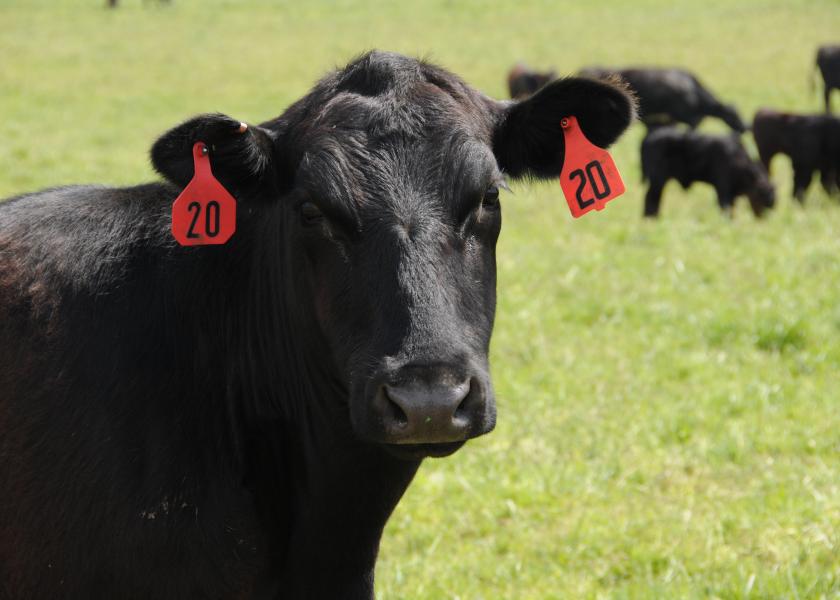Angus: Introducing the New Beef Value

Written by Stephen Miller
Angus breeders are familiar with economic selection indexes and have utilized them in their selection and marketing programs.
Although now commonplace, just 15 years ago the use of such tools in beef cattle breeding was relatively new. The implementation of the current models behind dollar value indexes ($Values) were first introduced in 2004, and I imagine at the time created a lot of discussion.
Since 2004, producers’ attitudes towards indexes have changed and the tools have readily been used. Not only have attitudes changed, but also cattle management practices, science and technology, expected progeny difference (EPD) availability, and even cattle have evolved steadily over time.
Table 1 shows the change in EPD averages between 2004 and 2017 along with basic industry parameters that are inputs into the beef value ($B) model as reported in the Spring 2004 and Fall 2018 Sire Evaluation Reports. In 15 years, it is remarkable how much the economics of the industry have changed and how breeders have responded with genetic changes.
The new $B model was approved by the American Angus Association Board of Directors for implementation in June 2019, following a year-long intensive research project between Angus Genetics Inc. (AGI) staff and AbacusBio LTD from New Zealand (www.abacusbio.com), a consulting firm with specific expertise in economic index development.
The first phase of the project was a survey of industry attitudes and preferences for genetic selection tools and individual traits, along with basic demographics related to their operations. Survey information was used in the project to design selection tools to best fit industry needs identified. The mantra being selection tools work best when utilized.
Responses exceeded expectations with 3,174 respondents including 1,709 fully completed surveys.
Respondents demonstrated $Values are well used; reporting 82-85% of commercial cow-calf, retained owners and seedstock breeders using at least one index, with most using two. Generally, there was a positive perception of EPDs and $Values with a high level of trust in the underlying system (60-75% total agreement). Although $Values are currently well used and trusted, 75% of respondents supported the need for improvements to the model, agreeing that trait weightings could be revised.
As expected, retained owners had a propensity to rank traits impacting the feedlot and carcass segment higher, relative to the commercial cow-calf and the seedstock respondents. The ranking of trait preference within the retained owner category from most to least important included marbling grade, feed efficiency, average daily gain (ADG), and yield grade (YG), respectively. The preferred traits of feedlot respondents, the more limited in number group, were feed efficiency followed by similar rankings for health, gain and marbling.
Listen to Dr. Dan Moser discuss updates to the Angus dollar values in the May 20,2019, episode of The Angus Report.
The new $B model shares similarities to the existing model, and as a result the models rank animals in a similar manner. Among 183 of the top sires (genotyped) based on number of recent registrations, the correlation between new and old $B was 0.92.
The three features in the new $B model which are having the largest impact on rankings include:
1. Slaughter end point. The new model employs an algorithm to determine what the economically optimal slaughter end point is given the current economic assumptions. The result is a heavier, fatter animal compared to the average industry steer indicating that increases in quality grade premiums offset the increased yield discounts at those heavier weights, while still avoiding overweight discounts. These tradeoffs follow those that feeders face with every pen of cattle they feed.
2. Dressing percent. The new $B model directly predicts differences in dressing yield based on yearling weight (YW) and carcass weight (CW) EPDs. The variation in these two traits is illustrated in Figure 1. As the scatter plot shows, although these traits are correlated (0.75) in the Angus genetic evaluation, there are cattle which clearly show more or less carcass weight, given their live weight at a given age. This differential is now impacting cattle value in the new model.
3. Price grid. The old $B model assumed cattle were marketed on an industry average grid. The price grid utilized in the new $B model incorporates a proportion of the cattle being marketed on a grid that rewards more for above average quality and yield. The old and new price grids are comparedin Table 2 and show the greater rewards for both quality (marbling) and yield with the new grid.
So, what’s different?
Although the new and old models are highly correlated, producers will see noticeable difference in how animals rank in the new $B compared with the current rankings. To best understand how the two models place different emphasis on different traits, it is useful to consider the expected response to selection.
Response to selection is a useful tool as it takes into account the intercorrelations between all the traits. Figure 2 illustrates the expected response in the EPD traits to approximately 10 years of selection. The new $B model trades off small differences in growth rate response (2 fewer pounds of YW and CW) for more marbling, yield and feed efficiency, which is predicted to be a more profitable alternative.
The release of $Values from an improved model is a natural progression for the Association. The current $B model has stood the test of time and has served the membership and the industry well. Selection on the new $B will result in more profitable feeder calves when fed through to slaughter in today’s market with payments made on a quality focused grid.
Visit Angus.org/Index for more information on the $Value Index updates.







